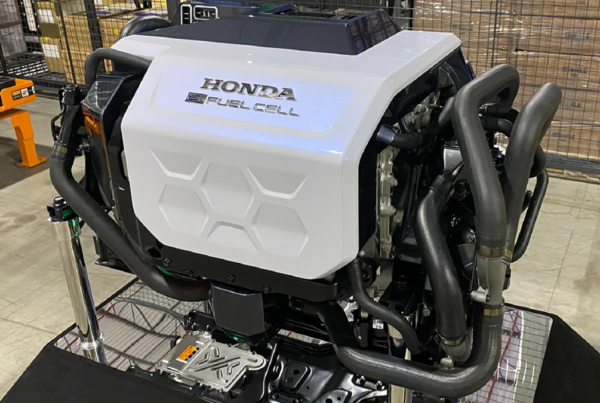
- Emission-free road traffic is possible, says the ADAC. And compares the two main technologies.
In the transport sector too, CO 2 emissions have to be reduced. Private cars focus on two technologies: electric cars that use batteries (Battery Electric Vehicles, BEV for short) and Fuel Cell Electric Vehicles (FCEV), where a fuel cell generates electricity from hydrogen and ambient air.
So far, in Germany, the few electric cars licensed drive almost exclusively with battery power. And the German carmakers are also focusing on this technology so far. In Japan and South Korea, on the other hand, fuel cell cars are already being mass-produced. Therefore, industry insiders hold that the race has by no means decided.
But it is also clear that without a nationwide infrastructure for charging or refueling, neither of the two technologies will prevail. The ADAC wanted to find out which of the two options is more cost-effective and, together with the Fraunhofer Institute for Optronics, Systems Engineering and Image Evaluation (IOSB) and the Ludwig Bölkow Foundation, has written a study that investigates this.
In it, he highlights three scenarios for the period from 2040 to 2050. In the BEV scenario, 80 percent of the vehicles are equipped with batteries and 20 with fuel cells. In scenario FCEV, it is exactly the opposite. The scenario Mix assumes a uniform distribution. The result of the study: A clear draw.
Efficiency: 1: 0 for BEV
“A high number of battery vehicles (vs. fuel cell vehicles) reduces the direct energy demand from the passenger car sector due to higher vehicle efficiency,” says the ADAC study. And that difference is significant. Because: Both, BEV and FCEV drive with electric motors. They have an efficiency of about 90 percent – a fabulous figure compared to internal combustion engines that convert significantly less than one-third of the fuel burn value into kinetic energy.
Battery or fuel cell vehicles: The three scenarios of the study at a glance

But while lithium-ion batteries release about 95 percent of the stored electricity again, the balance of hydrogen is significantly worse: only in the electrolysis, ie in the generation of hydrogen from electricity about 35 percent of the energy “lost”. The fuel cell, which converts hydrogen into electricity, can turn just over 50 percent of its energy into electricity.
Overall, the efficiencies are thus about 85 percent for BEV and 30 percent for FCEV. This means that wind turbines, solar systems and Co. have to produce 2.5 times as much electricity in a fuel cell car for one kilometer as they do for a kilometer in battery-powered vehicles.
Power-to-gas systems: 2: 0 for BEV
Since we are already at the electrolysis: For a FCEV fleet the corresponding plants must be built, which use electricity to separate the hydrogen from water. According to ADAC’s assumption, large-scale electrolysers are conceivable, as well as on-site systems that generate hydrogen directly at the filling stations.
This, of course, has a high benefit for the CO 2 balance if the electricity is generated from renewable energies. Since the service providers among them, wind and sun, are known to generate electricity regardless of demand, electrolysis is seen as an opportunity to store surplus electricity in order to harness it.
Large Memory Capacity: Connect hit for FCEV 2: 1
The same is true for BEV: the solar cells supply the electricity they need, especially when the cars are in use. At night, when the batteries are to be charged, so the power must come from somewhere else. If then no wind blows, the stream would have to come from conventional power stations – or from additional storage.
Network expansion: compensation for FCEV 2: 2
Added to this is the transmission: According to ADAC, the medium-voltage, but especially the low-voltage grid would have to be significantly expanded in order to meet the additional demand for electricity from domestic charging stations and public fast-charging stations. Also, the gas network would have to be upgraded to distribute 100 percent H 2 . However, the ADAC estimates the effort, especially with regard to maintenance costs, much higher for the BEV scenario than for the FCEV scenario.
BEV in the medium term in the lead: 3: 2
First of all, predicts the ADAC, the investment costs in the infrastructure – ie in particular for power generation and conversion, storage and distribution of the respective energy source – in the BEV scenario are likely to be lower than with a high proportion of fuel cell cars.
Long term, FCEV equal: 3: 3
The immense number of required charging points and the associated maintenance and repair costs should, however, bring an overall cost advantage to the FCEV scenario according to ADAC assumptions.
The full 134-page report is available in German from the ADAC Foundation
Read the most up to date Fuel Cell and Hydrogen Industry news at FuelCellsWorks




